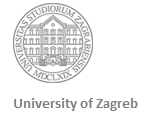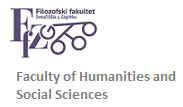SYLLABUS
Course title: EU and International Organizations
Instructor: Dr. Nataša Pavlović
ECTS: 5
Status: Mandatory for students enrolled in the translation track of the graduate program in English as a single major; elective for students enrolled in the translation track of the graduate program in English in combination with another major
Semester: 2nd
Enrollment requirements: The students must pass the exam in Translation of Scientific and Academic Texts (1st semester) prior to enrolling in this course.
Course description: The course consists of one contact hour of lectures and two contact hours of translation exercises per week. The lectures deal with the following topics: EU institutions and their functioning, history of the EU, EU policies, fundamental rights and freedoms, the single market, the EMU, EU official languages, policy of multilingualism, translation and interpreting for EU institutions, types of legal instruments, translation of the acquis communautaire; the UN, the OSCE, the IMF, the World Bank.
In the exercises, students translate representative samples of texts that they can expect to encounter in their future professional work, such as EU directives, decisions, reports, brochures, web pages, and so on. Translation assignments are done individually and in groups, partly in the virtual environment, on http://omega.ffzg.hr/ (Moodle). The students learn to use the relevant printed and electronic resources created by various Croatian or EU institutions, and also create their own glossaries.
Objectives: By the end of the course the students should be familiar with the EU and its institutions and their functioning, as well as the other important international organizations. They should be able to translate representative samples of texts such as directives, decisions, reports, brochures, web pages and so on. They should be familiar with the relevant printed and electronic resources, and should be able to create their own glossaries of terminology.
Course requirements: Regular course attendance, regular submission of assignments, participation in the online forums as requested; continuous evaluation, final written exam.
Week by week schedule:
Lectures:
| Session | Topics |
| 1 | Introduction. Course contents, goals and requirements. |
| 2 | EU at a glance: Flag, symbols, anthem, Europe Day, the Schuman Declaration. Size and population of the EU. |
| 3 | EU structure and organization. Main institutions and their functioning, part 1. (Parliament, Council, Commission) |
| 4 | Main institutions and their functioning, part 2 (Court of Justice, Court of Auditors, European Economic and Social Committee, Committee of the Regions, European Central Bank, European Investment Bank, European External Action Service) |
| 5 | EU history – key dates, treaties, enlargement. |
| 6 | EU policies (solidarity and innovation policies) |
| 7 | EU official languages. Multilingualism. Translation and interpreting in the EU. |
| 8 | Types of community legislation. Translation of the acquis. |
| 9 | Rights and freedoms. |
| 10 | The single market. |
| 11 | Economic and monetary union (EMU). |
| 12 | Croatia and the European integration. |
| 13 | The World Bank & IMF. |
| 14 | The UN and OSCE. |
| 15 | End-of-term test. Student feedback. Suggestions for future work. |
Exercises
| Session | Topics |
| 1-4 | Press materials (both directions) |
| 5-8 | Texts for the web (both directions) |
| 9-12 | Translation of the acquis communautaire into Croatian. |
| 13-14 | Translation of Croatian legislature into English. |
| 15 | End-of-term test. Student feedback. Suggestions for future work. |
Reading:
On the EU:
http://europa.eu.int/comm/publications/booklets/eu_glance/44/index_en.htm
http://europa.eu.int/comm/publications/booklets/eu_glance/44/index_en.htm,
Fontaine, P., Europe in 12 lessons, (European Commission), 2003, 62 pp
Key facts and figures about the European Union, European Commission, 2004,
70 pp
Pinder, J., The European Union, A very Short Introduction, OUP, 2001.
Croatian Accession to the European Union,Volume 2. Zagreb: Institut za javne financije and
Friedrich Ebert Stiftung.
On translation:
European Commission. Translation Tools and Workflow. Available on:
http://ec.europa.eu/dgs/translation/bookshelf/tools_and_workflow_en.pdf
Šarčević, S., ed. 2001. Legal Translation, Preparation for Accession to the European Union. Rijeka: Faculty of Law, University of Rijeka.
Wagner, E., S. Bech & J. M. Martinez. 2002. Translating for the European Institutions. Manchester: St. Jerome Publishing.
http://europa.eu/languages/en/chapter/15
Glossaries and other translation resources:
Glossaries published by MVPEI, available on:
http://www.mvpei.hr/ei/default.asp?ru=177&sid=&akcija=&jezik=1
The DGT Multilingual Translation Memory of the Acquis Communautaire, available on:
http://langtech.jrc.it/DGT-TM.html
Eurovoc: http://europa.eu/eurovoc/
Eur-lex: http://eur-lex.europa.eu/en/index.htm
Pojmovnik europskih integracija: http://www.mvpei.hr/ei/default.asp?ru=137&sid=&akcija=&jezik=1
Other resources:
Articles and presentations available on http://omega.ffzg.hr/



